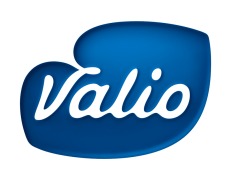Health and wellness concerns drive lactose-free demand
20 Jun 2019European demand for lactose-free products is on the rise as consumers increasingly associate lactose-free claims with digestive health benefits.
Lactose intolerance varies by region, and fewer than 10% of Northern Europeans are thought to be lactose intolerant, compared with up to 95% in some parts of Africa and Asia. Overall, it affects about 65% of the global population, so demand for lactose-free products is widespread.
So why is the European market the second largest global lactose-free market?

Firstly, Europe has a mature dairy industry. However, lactose intolerance is not the only driver. Instead, many consumers are choosing lactose-free foods and drinks because they perceive them as beneficial for digestive health. Finnish dairy company Valio suggests manufacturers could market lactose-free products as ‘easy on the stomach’, for example, to tap into this perception.
Many lactose intolerant consumers choose to avoid dairy altogether, and plant-based milk and dairy alternatives have benefited from lactose-free market growth, as a growing number of consumers has cut cow’s milk from their diets. In recent years, demand for plant-based products has been driven by health, animal welfare and environmental reasons as well as lactose intolerance, and the global market for dairy alternatives drinks alone has more than doubled in value since 2010, according to Innova Market Insights.
Meanwhile, sales of lactose-free dairy have outpaced dairy sales in general, growing an average of 6% a year in Western Europe from 2013 to 2017, according to Euromonitor International, while overall dairy consumption remained stagnant.
Several major suppliers – including DSM, Novozymes and Chr Hansen provide enzymes so manufacturers can create lactose-free dairy ingredients, while other companies supply such ingredients directly. Valio, for example, has a line of lactose-free milk powders for use in dairy foods and drinks, as well as in confectionery, baked goods and ready meals.
The enzymatic approach remains a simple and effective way to make lactose-free dairy products, and has been used for decades. Lactase is used to split the milk sugar lactose into its constituent sugars, galactose and glucose. In recent years, lactase also has found a new lease of life in reduced sugar flavoured dairy products because these simple sugars are much sweeter than lactose, allowing manufacturers to use less added sugar.
According to Euromonitor International, total free from sales in Western Europe increased 11.7% in 2017, and 8.7% in Eastern Europe – and most of the sales growth did not come from consumers with allergies and intolerances. It has named products with a lactose-free positioning as having gained a particularly strong presence, with many consumers identifying such products as healthier and easier to digest, and reporting that they feel better consuming them.
The dairy company Valio is among those to note that as more consumers demand lactose-free dairy, many more people live in households where lactose is off limits for the whole family, and these consumers are looking for alternatives too. And from a manufacturer’s perspective, lactose-free ingredients may provide benefits beyond the absence of lactose, such as improving the texture of gluten-free baked goods, or providing a smoother mouthfeel in ice cream.

